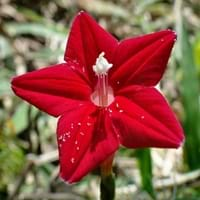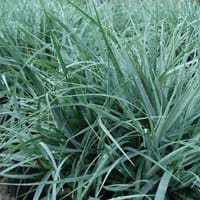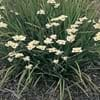Life Span
Annual and Perennial
Perennial
Type
Bulb or Corm or Tuber
Sedge or Rush
Origin
South Africa
Northeastern United States, Western Europe
Types
Not Available
Not available
Habitat
Subtropical climates, subtropical regions
Grassland, moorlands
USDA Hardiness Zone
9-10
4-8
Sunset Zone
21,22
3a, 3b, 4, 5, 6, 7, 8, 9, 14, 15, 16, 17, 18, 19, 20, 21, 22, 23, 24
Habit
Mat-forming
Clump-Forming
Flower Color
Red, Magenta
Yellow green
Flower Color Modifier
Bicolor
Bicolor
Fruit Color
Not Available
Light brown
Leaf Color in Spring
Gray Green
Blue Green, Gray Green, Gray
Leaf Color in Summer
Light Green
Blue Green, Gray Green, Gray
Leaf Color in Fall
Several shades of Green
Blue Green, Gray Green, Gray
Leaf Color in Winter
Light Green
Not Available
Leaf Shape
Long, Alternate
Long hair-like leaves
Plant Season
Spring, Summer
Spring, Summer, Fall
Sunlight
Full Sun
Partial Sun, Partial shade
Growth Rate
Medium
Medium
Type of Soil
Loam, Sand
Clay, Loam, Sand
The pH of Soil
Acidic, Neutral
Acidic, Neutral, Alkaline
Soil Drainage
Well drained
Average
Bloom Time
Late Spring, Early Summer, Summer
Early Summer
Tolerances
Drought
Drought
Where to Plant?
Ground
Ground
How to Plant?
Seedlings
Divison
Plant Maintenance
Medium
Low
Watering Requirements
Needs good drainage, Needs high amount of water
Average Water Needs
In Summer
Lots of watering
Lots of watering
In Spring
Moderate
Moderate
In Winter
Average Water
Average Water
Soil pH
Acidic, Neutral
Acidic, Neutral, Alkaline
Soil Type
Loam, Sand
Clay, Loam, Sand
Soil Drainage Capacity
Well drained
Average
Sun Exposure
Full Sun
Partial Sun, Partial shade
Pruning
No pruning needed, Prune to control growth, Remove damaged leaves, Remove dead branches, Remove dead leaves
Remove damaged leaves, Remove dead branches, Remove dead leaves
Fertilizers
All-Purpose Liquid Fertilizer, High-phosphorous fertilizers used
All-Purpose Liquid Fertilizer
Pests and Diseases
Pests and diseases free
Aphids, Brown Spots, Galls
Plant Tolerance
Drought
Drought
Flowers
Showy
Insignificant
Flower Petal Number
Single
Single
Fragrant Flower
Not Available
No
Showy Foliage
Not Available
Yes
Foliage Texture
Fine
Fine
Foliage Sheen
Matte
Matte
Attracts
Butterflies, Hummingbirds
Wildlife
Allergy
Unknown
Not Available
Aesthetic Uses
Beautification, Ornamental use, Showy Purposes, small hedge
Cottage Garden, Ground Cover, Landscape Designing
Beauty Benefits
Not Available
Not Available
Environmental Uses
Air purification
Air purification
Medicinal Uses
Anti-fungal, Purgative
Not Available
Part of Plant Used
Leaves
Leaves
Other Uses
Beneficial species for attracting pollinators
Used for Landscaping
Used As Indoor Plant
No
No
Used As Outdoor Plant
Yes
Yes
Garden Design
Alpine, Container, Rock Garden / Wall, Tropical
Edging, Groundcover, Mixed Border
Botanical Name
Ipomoea quamoclit
CAREX flacca
Common Name
star glory , hummingbird vine
blue sedge, gray carex, glaucous sedge, carnation-grass
In Hindi
Kunjlata
ब्लू सेज
In German
Ipomoea quamoclit
Blau-Segge
In French
Ipomoea quamoclit
Bleu carex
In Spanish
Ipomoea quamoclit
azul de la juncia
In Greek
Ipomoea quamoclit
μπλε σπαθόχορτο
In Portuguese
Ipomoea quamoclit
azul Sedge
In Polish
Ipomoea quamoclit
niebieski turzyca
In Latin
Ipomoea quamoclit
blue Sedge
Phylum
Magnoliophyta
Magnoliophyta
Class
Magnoliopsida
Liliopsida
Order
Solanales
Cyperales
Family
Amaryllidaceae
Cyperaceae
Clade
Angiosperms, Asterids, Eudicots
Angiosperms, Commelinids, Monocots
Tribe
Ipomoeeae
Not Available
Subfamily
Not Available
Not Available
Number of Species
Not Available
Importance of Cypress Vine and Blue Sedge
Want to have the most appropriate plant for your garden? You might want to know the importance of Cypress Vine and Blue Sedge. Basically, these two plants vary in many aspects. Compare Cypress Vine and Blue Sedge as they differ in many characteristics such as their life, care, benefits, facts, etc. Every gardener must at least have the slightest clue about the plants he wants to plant in his garden. Compare their benefits, which differ in many ways like facts and uses. The medicinal use of Cypress Vine is Anti-fungal and Purgative whereas of Blue Sedge is Not Available. Cypress Vine has beauty benefits as follows: Not Available while Blue Sedge has beauty benefits as follows: Not Available.
Compare Facts of Cypress Vine vs Blue Sedge
How to choose the best garden plant for your garden depending upon its facts? Here garden plant comparison will help you to solve this query. Compare the facts of Cypress Vine vs Blue Sedge and know which one to choose. As garden plants have benefits and other uses, allergy is also a major drawback of plants for some people. Allergic reactions of Cypress Vine are Unknown whereas of Blue Sedge have Not Available respectively. Having a fruit bearing plant in your garden can be a plus point of your garden. Cypress Vine has no showy fruits and Blue Sedge has no showy fruits. Also Cypress Vine is not flowering and Blue Sedge is not flowering . You can compare Cypress Vine and Blue Sedge facts and facts of other plants too.





